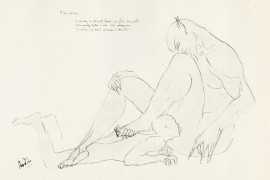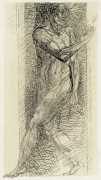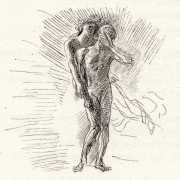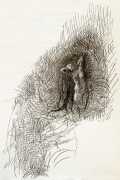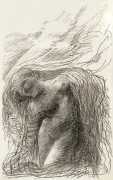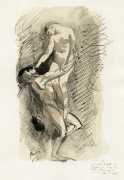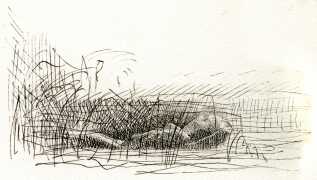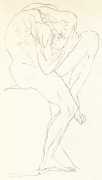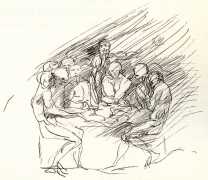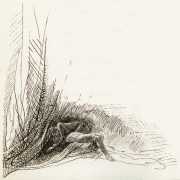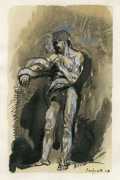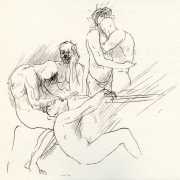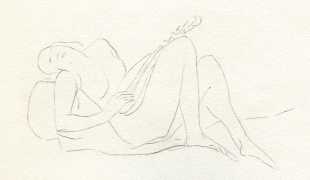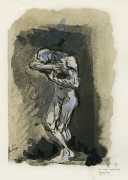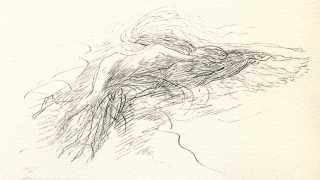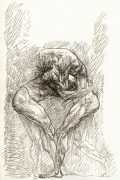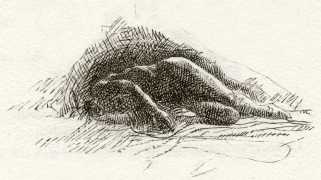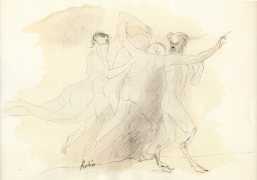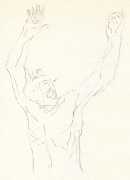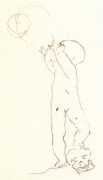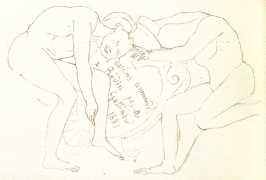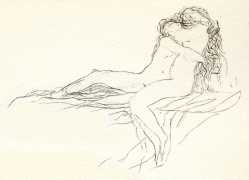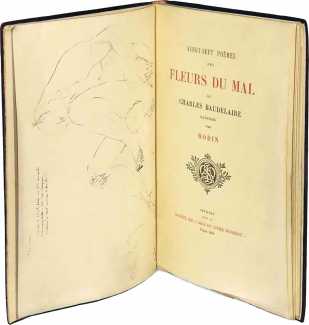
If you considered yourself any kind of artist or writer in Paris in the swinging sixties and seventies – that is, the 1860s and 70s – then you carried a copy of Charles Baudelaire’s Les fleurs du mal (The Flowers of Evil) with you at all times, and would quote whole poems from it at the drop of an existential allusion.
Les fleurs du mal, one of the most important literary contributions to the symbolist and modernist movements, was and is a milestone in poetry, bringing a fresh personal and emotional response to what Baudelaire saw as the boredom and rigidity of the art and morals of his time. A verse from the introduction illustrates his fiery vision:
Si le viol, le poison, le poignard, l’incendie,
N’ont pas encore brodé de leurs plaisants dessins
Le canevas banal de nos piteux destins,
C’est que notre âme, hélas! n’est pas assez hardie.
If rape, poison, dagger and fire
Have still not embroidered their pleasant designs
On the banal canvas of our pitiable destinies,
It is because our soul, alas, is not bold enough!
Les fleurs du mal caused much moral outrage when it appeared. The poems, dealing with themes relating to decadence and eroticism, were judged ‘an insult to public decency’; the author and the publisher were prosecuted and Baudelaire fined. Six poems from the work were suppressed, the ban on their publication not being lifted in France until 1949.
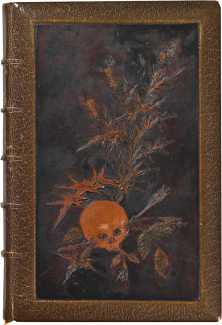
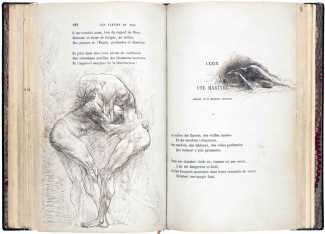 Rodin and Baudelaire never met each other, but Rodin read and reread Les fleurs du mal, many of the poem’s themes resonating strongly with the artist’s desire to show the world in all its complexity and turmoil. In 1882 Rodin was approached by Paul Gallimard, Baudelaire’s publisher, who had seen and admired some of Rodin’s drawings; Gallimard asked if Rodin would be interested in contributing some of his work for an illustrated edition of Fleurs du mal, and Rodin readily areed as long as he could decide how and in what way to illustrate it. Paul Gallimard gave him a free hand, and the result was one of the most attractive illustrated books of the late nineteenth century.
Rodin and Baudelaire never met each other, but Rodin read and reread Les fleurs du mal, many of the poem’s themes resonating strongly with the artist’s desire to show the world in all its complexity and turmoil. In 1882 Rodin was approached by Paul Gallimard, Baudelaire’s publisher, who had seen and admired some of Rodin’s drawings; Gallimard asked if Rodin would be interested in contributing some of his work for an illustrated edition of Fleurs du mal, and Rodin readily areed as long as he could decide how and in what way to illustrate it. Paul Gallimard gave him a free hand, and the result was one of the most attractive illustrated books of the late nineteenth century.
Copies of the 1883 illustrated edition are now exceedingly rare, but in 1940 The Limited Editions Club produced a complete edition of Les fleurs du mal incorporating all the drawings by Auguste Rodin from the copy illustrated for Paul Gallimard. The Rodin illustrations were printed in collotype by Georges Duval and hand-coloured by Maurice Beaufume. The 1940 reprint included a fascinating introductory essay by the artist and art critic Camille Mauclair (1872–1945; Camille Mauclair is the pen-name of Séverin Faust), which is reproduced below.
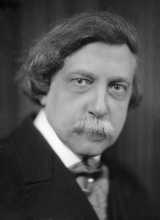
Introduction to the 1940 reprint of the Rodin-illustrated edition of Les fleurs du mal, by Camille Mauclair
The designs which here link the genius of Rodin with the genius of Baudelaire are of especial interest to anyone who wishes to study the mental and technical evolution of the great sculptor. They mark a curious and important moment in his life and of his art.
At the time when M. Paul Gallimard commissioned them for a copy of the Fleurs du mal, the public knew hardly anything of Rodin’s drawings, and these too remained unknown. Later, after years of the strictest reserve, Rodin showed, exhibited and allowed to be reproduced a considerable series of sketches touched with watercolour and these were much discussed, praised or blamed, but rarely understood in the profundity of their intention.
The truth is that these designs were never intended to express the exact character of the human model, but rather the analogies of its forms with those of the flora and fauna of nature in all its abundant manifestations. Far from representing the personality of the model, they use it merely as a kind of figurative symbol, a point of comparison, and that is why the artist, outlining his figures with a single stroke of the pencil, shading them with cursive and apparently haphazard strokes, is completely indifferent to incorrect detail and even to those distortions which some have mistaken for ignorances, naively forgetting that perfection of contour and modelling of which the wonderful sculptor had proved himself capable. Rodin observed the model freely and as soon as an attitude reminded him suddenly of a vase, the branch of a tree, an animal, a rhythm of soil or water, he set down this momentary coincidence with a few lines and curves, the human figure being no more than a point of reference to the other forms of nature. He shared with the Ancients, the Gothic artists, the alchemists and physicians of the Middle Ages, that semi-scientific, semi-mystical belief that the human body is a synthesis of the essential forms of nature and that all these forms, in spite of their infinite variety, can be reduced to a very small number of shapes and types. These designs are not therefore representations but ideographs, allegorical notations, attempts to discover subtle reciprocities and formal connections invisible to the vulgar; an almost hieroglyphic writing of decorative forms. The public expects a design to be something quite different: it expects a methodical piecing together of every detail of the object studied to give a photographic resemblance which, for it, is the sign of artistic ability. That is why these schematic designs often create misunderstanding; and the failure to comprehend the relationship – which did not, in fact, exist – between these ‘scribblings’ and Rodin’s scrupulously anatomical marbles and bronzes.
The pen drawings which Rodin made on a copy of Baudelaire are much earlier, in date, than the watercolours mentioned above. They are nearer, in method and intention, to some of the artist’s etchings, of which the most celebrated are the two studies of the head of Victor Hugo. They are extremely characteristic and we owe a debt of gratitude to M. Gallimard for having allowed them to appear, for they enable us to understand how Rodin from that early period was working out his future designs. We find here, in fact, some pages where the design is carefully based on real models, at once delicate and closely-knit like a study for a statue; on other pages the figures are merely indicated by a series of washes giving a violent contrast of light and shade and sacrificing the exactness of proportions to the essential movement; on other pages again there is neither colour, nor volume, nor modelling, but simply a series of lines, circles, and feverish cross-hatching already the frank calligraphy of the later drawings. We really find here the three phases of the idea of design and its utility which Rodin built up for himself. How many times, before more recent drawings, have I not had to reply to some of the most benevolent admirers of his sculpture who exclaimed, ‘But how is it that he designed so well with the sculptor’s chisel and so badly with the pencil?’, to explain to them that representation and the notation of ideas are two distinct aims in graphic art. These designs for Baudelaire, if it had then been able to place them before their eyes, would have served to demonstrate the confusion of their minds in the most striking and peremptory fashion. Their astonishment would have ceased: they would have understood that Rodin did not draw badly, but was seeking by a line arbitrary, excessive and untrammelled by exactitude, something other than mere imitation.
This volume is therefore a document of the most precious importance for the intimate understanding of Rodin’s technique and provides the key to certain mysteries of his art. The greatest artists, Michelangelo, Rembrandt, Delacroix, all, at a certain moment of the upthrusting of their genius, threw aside, as it were, the ballast of exactitude as conceived by our simplifying reason and our ordinary eyes, in order to attain the fixation of ideas, the synthesis, the pictorial handwriting of their dreams: and it was believed that they ‘drew badly’ because they were only concerned with one of the properties of form, suggestion by analogy. This is what happened to Rodin (and in a certain degree to Eugène Carrière) – and it is from this that his final period, inaugurated by the statue of Balzac, takes its rise.
If I now come to the feeling behind the designs for Baudelaire, it will be understood at once, after the foregoing explanations, that there is no question of illustrations. Rodin was too great an artist, he had too profound a respect for poetry and he loved Baudelaire too much not to know that to illustrate a book as unique and terrible as Les fleurs du mal would be a project as unrealisable as it was detestable. No one except a blundering mediocrity would attempt it: every intelligent artist would refuse any such proposition. M. Gallimard made no such suggestion to Rodin. What we have before us are simply the marginal notes of a reader of genius who ‘thought in design’ as a mathematician thinks in figures. Odilon Redon had already done the same in an album of lithographs. But he attempted a series of compositions half-schematic and half-real, some of which were evocative but the majority frankly childish. Rodin evokes no scene, no background. He merely expressed his emotions by the voluptuous or contorted curve of the naked body. He could say everything in terms of the human form. He drew the essential personage, the creature who weeps, or dreams or trembles throughout these poems.
Here are washes of colour, tortured, Dantesque, bearing a relationship to some of his most powerful and sombre statues like Eve or the Ghosts. Here are simple strokes of the pen, like that extraordinary silhouette which accompanies the sonnet ‘The Death of the Poor’ as long drawn-out in its supplication as the sob of a ’cello. There is the fully sculptural treatment of ‘The Thinker’, and that clear, almost sweet design for the sonnet ‘Beauty’, which, as it were, presages some poem in marble, magically pale. This most of all is curious and interesting since it foreshadows the later distortions of Rodin, for whom the truth of movement expressing emotion had become an exactitude transcending the exactitude of the copy. Remark, with regard to the beautifully-drawn belly, the curve of which determines the entire rhythm of the naked figure, how the artist has deliberately sacrificed the exactitude of the connection between the shoulder and the breast, in order not to break the rich curve of the composition. One can understand here how he made use of the form of a model without allowing it to enslave him. There is the frightening design, yet so restrained in its effect, which translates the verse:
Et le ver rongera ta peau comme un remords.
There is the design for ‘The Martyr’ and the sketch for ‘The Death of Lovers’. But one could pause before all. Better than the cleverest illustrations, these designs, blended with the typography, give an intense impression of life. One feels that Rodin handled the book, took it up and set it down a hundred times, read it and marked it, opened it again suddenly under the lamp, some evening when he was tired, and haunted by a strophe, took up his pen. One guesses where he stopped to read, which page he crumpled without troubling to be careful of the volume. It was not some fine edition that had been given him and which he might have feared to spoil. It was his pocket Baudelaire, and these are things he said to himself about it. It is as moving as one of the blotted pages of Balzac’s manuscripts, full of fever, rage, enthusiasm and sleepless nights. Precious book! If only Baudelaire could have seen it! Rodin was no man-of-letters: he was impressed by very few books, but they were all masterpieces. He penetrated them, assimilated them, slowly, profoundly: they became part of him and he made from their substance his bronzes and his marbles. And Les fleurs du mal was one of the expressions of the genius of humanity which touched him most deeply, and he gave us other Fleurs du mal which Baudelaire had dreamed of but not plucked. The sketches in this volume show us the kinship between two great souls for whom the world was nothing but the background of human will, and sorrow but the pretext for creation.


